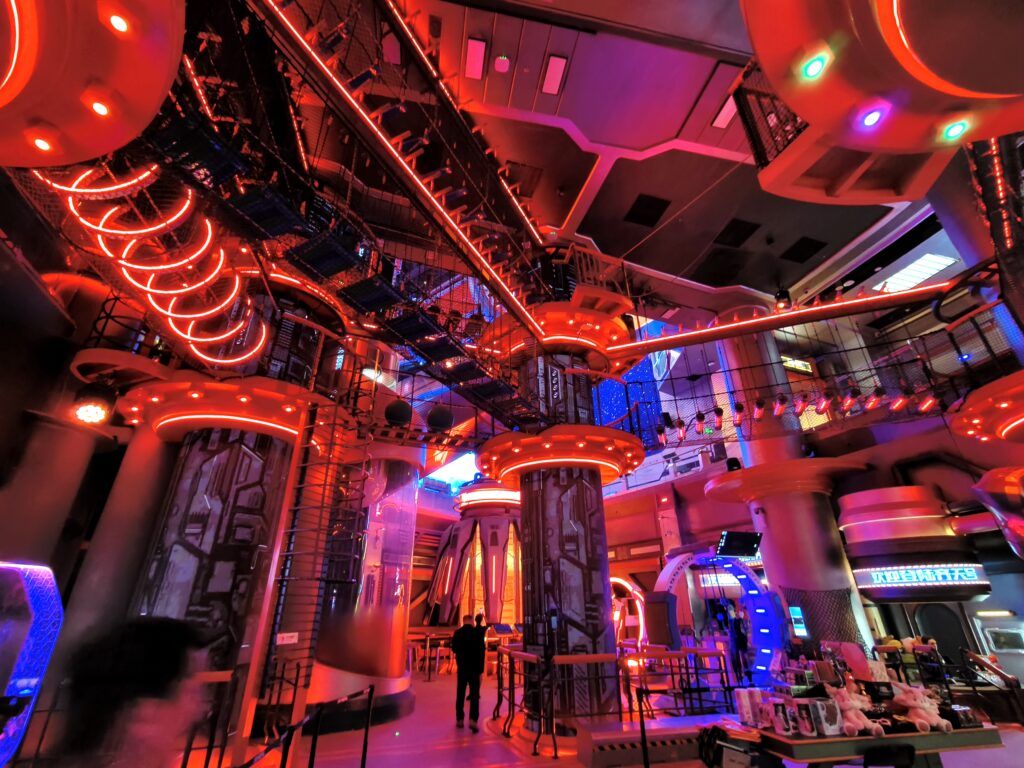
Located in Shijingshan District, west of Beijing, Shougang Blast Furnace No. 1 has been transformed into an innovative cultural complex known as SoReal Science Fiction Paradise. The project is billed as one of the world’s first fully immersive space-themed science fiction complexes, and is notable for its use of cutting-edge “5G+XR” technology to revitalize a century-old historic site.
SoReal officially opened its doors to the public in February this year. The venue has been designed with the aim of offering visitors a unique experience. Here, Chinese science fiction narratives are combined with a wide range of innovative technologies.
The complex features a vast terrain to explore, spanning approximately 20,000 square meters. It serves as a multi-functional cultural center hosting exhibitions, e-sports competitions, performances, and art shows. This ambitious project not only seeks to entertain, but also to provide a unique immersive cultural tourism experience.
The most striking aspect of SoReal is its ability to integrate advanced technologies. We can find 5G, artificial intelligence (AI), augmented reality (AR), virtual reality (VR) or mixed reality (MR). As well as cloud computing, digital twins, large-scale spatial positioning, holographic images and 3D projection. These technologies combine to offer an unprecedented space exploration experience. Visitors can immerse themselves in an environment that seems to defy the limits of reality.
The revitalization of Shougang No. 1 Blast Furnace is an example of China’s ability to merge its rich historical heritage with modern technological innovation. The project is located in Shougang Park, which has been selected as one of the key venues for the 2024 China International Fair for Trade in Services. The international event is expected to attract visitors and experts from around the world and provide a platform for SoReal to demonstrate its potential as a world-class cultural tourism destination.
Shougang Blast Furnace No. 1 is a historic industrial structure located in Shijingshan District. This blast furnace began operation in the 1950s. At that time, it was part of a steel complex that served as a mainstay of heavy industry in China for decades.
As the Chinese capital modernized and environmental concerns grew, heavy industry, including steel, began moving out of the city to reduce pollution. Blast Furnace No. 1 ceased operations in 2008 and the site was decommissioned and closed.
Rather than demolishing it, however, it was decided to preserve and repurpose the space as a cultural and historical landmark. This renovation is part of an effort by the authorities to preserve Beijing’s industrial heritage and turn it into a tourist attraction.
The decision to transform Blast Furnace No. 1 into SoReal reflects a significant shift in the way China is approaching historical preservation and cultural development. Rather than letting the site become a relic of the past, it has been reinvented as a hub of innovation and creativity that combines the best of the past with the possibilities of the future.
SoReal’s impact is not limited to the cultural sphere alone; it also has implications for the tourism and technology industries. The resort has been selected as one of the first “5G Smart Tourism” pilot programs by China’s Ministry of Culture and Tourism and Ministry of Industry and Information Technology. This designation highlights the authorities’ commitment to integrating emerging technologies into the tourism sector with the aim of creating experiences that not only attract visitors but also promote technological advancement.

About the technologies implemented

Source: https://reporteasia.com/economia/turismo/2024/09/08/soreal-una-experiencia-inmersiva-unica-de-ciencia-ficcion-en-beijing/

